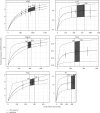The Optimal Type and Dose of Exercise for Elevating Brain-Derived Neurotrophic Factor Levels in Patients With Depression: A Systematic Review With Pairwise, Network, and Dose-Response Meta-Analyses
- PMID: 40226670
- PMCID: PMC11919060
- DOI: 10.1155/da/5716755
The Optimal Type and Dose of Exercise for Elevating Brain-Derived Neurotrophic Factor Levels in Patients With Depression: A Systematic Review With Pairwise, Network, and Dose-Response Meta-Analyses
Abstract
Background: Reduced brain-derived neurotrophic factor (BDNF) levels have been linked to increased depression risk. While physical exercise is known to alleviate depressive symptoms and elevate BDNF levels, the effects of different exercise modalities and doses, along with their dose-response relationships, remain unclear. Objective: This study aims to systematically evaluate the effects of various exercise types and doses on BDNF levels in patients with depression through pairwise meta-analysis, network meta-analysis (NMA), and dose-response NMA and to provide personalized exercise prescription recommendations. Methods: A comprehensive search identified randomized controlled trials (RCTs) examining exercise's impact on BDNF levels in depression. Pairwise and NMA compared six exercise modalities: continuous aerobic exercise (CAE), resistance exercise (RE), combined aerobic and resistance exercise (AERE), yoga, Qigong, and mindfulness. Dose-response NMA was used to assess the relationships between exercise dose and BDNF levels. Results: Thirty-six RCTs with 2515 participants were included. The pairwise meta-analysis indicated that all exercise interventions significantly elevated BDNF levels in patients with depression, with AERE, RE, and yoga demonstrating the most substantial effects. NMA rankings suggested that AERE was the most effective intervention, followed by RE, yoga, Qigong, mindfulness, and CAE. Dose-response NMA revealed a positive nonlinear dose-response relationship between total exercise volume and BDNF levels, with an optimal effective dose identified at ~610 METs-min/week. Beyond 1000 metabolic equivalent of tasks (METs)-min/week, increases in BDNF levels appeared to plateau. Moreover, each exercise type had distinct dose-response patterns, with RE and AERE having relatively higher optimal effective dose ranges, while CAE, yoga, Qigong, and mindfulness exhibited lower optimal ranges. Conclusions: AERE, RE, and yoga are effective interventions for enhancing BDNF levels in patients with depression, with Qigong, mindfulness, and CAE being comparatively less effective. A positive nonlinear dose-response relationship between exercise volume and BDNF levels was observed. Further research is needed to refine dose-response relationships in this population.
Keywords: BDNF; depression; dose–response network meta-analysis; exercise.
Copyright © 2024 Zhu Yuping et al.
Conflict of interest statement
The authors declare no conflicts of interest.
Figures






Similar articles
-
Optimal dose and type of exercise to improve depressive symptoms in older adults: a systematic review and network meta-analysis.BMC Geriatr. 2024 Jun 7;24(1):505. doi: 10.1186/s12877-024-05118-7. BMC Geriatr. 2024. PMID: 38849780 Free PMC article.
-
Drugs for preventing postoperative nausea and vomiting in adults after general anaesthesia: a network meta-analysis.Cochrane Database Syst Rev. 2020 Oct 19;10(10):CD012859. doi: 10.1002/14651858.CD012859.pub2. Cochrane Database Syst Rev. 2020. PMID: 33075160 Free PMC article.
-
Falls prevention interventions for community-dwelling older adults: systematic review and meta-analysis of benefits, harms, and patient values and preferences.Syst Rev. 2024 Nov 26;13(1):289. doi: 10.1186/s13643-024-02681-3. Syst Rev. 2024. PMID: 39593159 Free PMC article.
-
Systemic pharmacological treatments for chronic plaque psoriasis: a network meta-analysis.Cochrane Database Syst Rev. 2017 Dec 22;12(12):CD011535. doi: 10.1002/14651858.CD011535.pub2. Cochrane Database Syst Rev. 2017. Update in: Cochrane Database Syst Rev. 2020 Jan 9;1:CD011535. doi: 10.1002/14651858.CD011535.pub3. PMID: 29271481 Free PMC article. Updated.
-
Interventions for central serous chorioretinopathy: a network meta-analysis.Cochrane Database Syst Rev. 2025 Jun 16;6(6):CD011841. doi: 10.1002/14651858.CD011841.pub3. Cochrane Database Syst Rev. 2025. PMID: 40522203
Cited by
-
The Role of Mitochondrial Energy Metabolism in the Mechanism of Exercise Improving Depression.Curr Issues Mol Biol. 2025 May 21;47(5):382. doi: 10.3390/cimb47050382. Curr Issues Mol Biol. 2025. PMID: 40699781 Free PMC article. Review.
-
Impact of probiotic supplementation on serum levels of brain-derived neurotrophic factor: GRADE-based dose-response meta-analysis.BMC Nutr. 2025 Aug 11;11(1):161. doi: 10.1186/s40795-025-01152-9. BMC Nutr. 2025. PMID: 40790243 Free PMC article.
References
-
- WHO. New york: World Health Organization; 2016. Group Interpersonal Therapy(IPT) for Depression.
Publication types
MeSH terms
Substances
LinkOut - more resources
Full Text Sources
Medical

